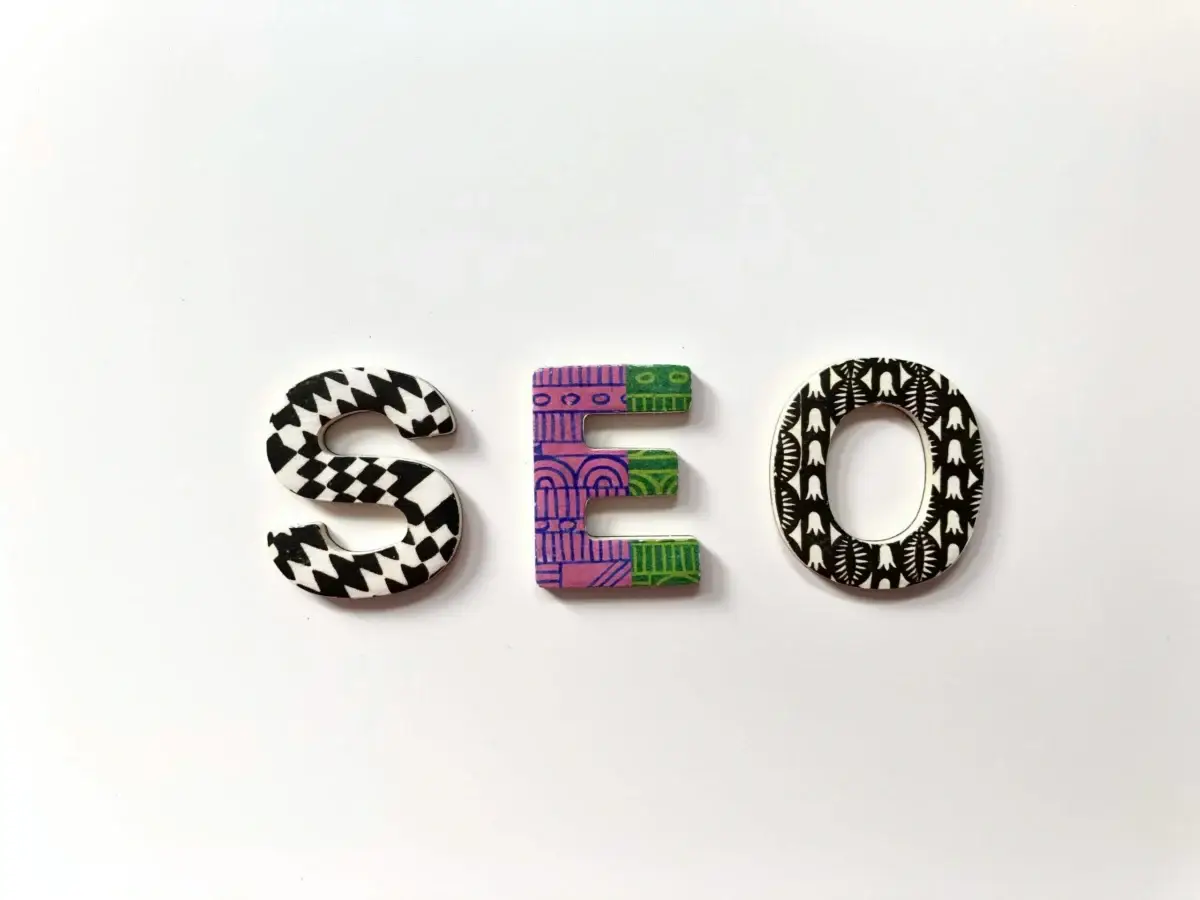Exceptional Marketing Trends in 2025
Exceptional Marketing Trends in 2025
As we move further into the digital age, 2025 brings with it a dynamic landscape of marketing trends. Businesses need to stay ahead of these shifts to maintain relevance and connect with their audiences effectively. Here are the top marketing trends poised to dominate 2025, offering insights into how companies can innovate and thrive.
- Marketing Trends – Personalization at Scale
Personalization has been a growing trend in Marketing Trends, but 2025 sees it reaching unprecedented levels. Advanced AI technologies enable brands to analyze customer data and create highly tailored experiences. From personalized email campaigns to custom product recommendations, businesses are using sophisticated algorithms to predict consumer behavior and meet their unique needs.
Key enablers of this trend include:
- AI-Powered Analytics: Tools like predictive analytics and machine learning help marketers understand user preferences in real time.
- Dynamic Content: Websites and apps now adjust content based on individual user behavior.
- Hyper-Segmentation: Marketers are breaking down audiences into micro-segments, enabling precise targeting.
The ability to deliver unique, meaningful interactions with customers across multiple channels will be a critical differentiator for brands. Companies are also investing in AI-driven tools that analyze not only past purchase history but also real-time behavioral cues, enabling immediate and relevant engagement.
- Marketing Trends – The Rise of AI-Generated Content
AI is transforming content creation. In 2025, AI tools are not just assisting marketers but also autonomously generating high-quality content. Platforms like ChatGPT and Jasper AI enable the creation of articles, social media posts, and even video scripts, freeing up human resources for strategic tasks.
Benefits of AI content generation include:
- Efficiency: Faster production of content.
- Cost Savings: Reduced dependency on large content teams.
- Multilingual Capabilities: AI tools can create content in multiple languages, broadening reach.
However, brands must balance AI content with authentic storytelling to maintain a genuine connection with their audience. Businesses are also exploring AI to create hyper-local content tailored to specific communities, making the content more relevant and engaging. By leveraging AI tools for real-time trend analysis, companies can ensure their content stays timely and resonates with current cultural moments.
- Marketing Trends – Voice and Visual Search Optimization (VSO)
Search behaviors are shifting. With the proliferation of smart devices, voice and visual searches are becoming commonplace. Consumers are asking Alexa or Google Assistant for product recommendations and using their smartphone cameras to find similar items online.
Strategies to leverage this trend:
- Structured Data Markup: Ensuring websites are optimized for voice search queries.
- High-Quality Visuals: Using clear and descriptive images to enhance visual search compatibility.
- Conversational Keywords: Adapting content to match natural language patterns used in voice searches.
Brands are also developing proprietary voice and visual search technologies to ensure seamless integration into their customer journeys. Beyond traditional e-commerce, industries such as travel, real estate, and education are increasingly adopting voice and visual search tools to enhance the customer experience.
- Marketing Trends – Sustainability and Ethical Marketing Trends
Environmental consciousness is no longer optional. In 2025, consumers expect brands to take a stand on sustainability. Marketing Trends strategies increasingly highlight eco-friendly practices, ethical sourcing, and community impact.
Key focus areas:
- Transparent Communication: Brands openly sharing their sustainability efforts.
- Green Certifications: Obtaining and promoting eco-labels to build trust.
- Purpose-Driven Campaigns: Aligning marketing messages with social and environmental causes.
Companies adopting circular economy principles and showcasing measurable impacts on environmental preservation will win customer loyalty. Highlighting stories of local impact and partnerships with environmental organizations also strengthens brand image. For example, showcasing initiatives like reducing carbon footprints, eliminating plastic waste, or supporting renewable energy projects can resonate deeply with eco-conscious audiences.
- Marketing Trends – Immersive Experiences with AR and VR (Virtual Reality)
Augmented Reality (AR) and Virtual Reality (VR) continue to revolutionize customer engagement. From virtual store tours to AR try-ons, these technologies offer immersive experiences that bridge the gap between physical and digital realms.
Applications in marketing:
- AR Product Previews: Allowing customers to visualize products in their own environment.
- VR Brand Experiences: Creating virtual events and spaces to engage users.
- Interactive Ads: Using AR filters on social media platforms to create memorable campaigns.
These tools are also becoming essential for B2B marketing, with virtual demonstrations and trade shows reducing costs and increasing accessibility. As AR and VR hardware becomes more affordable, even small businesses are exploring these technologies to differentiate themselves in crowded markets.
- Marketing Trends – The Dominance of Short-Form Video
Short-form video remains a powerhouse in digital marketing. Platforms like TikTok, Instagram Reels, and YouTube Shorts dominate user engagement, making video content a cornerstone of marketing strategies.
Tips for success:
- Authenticity Over Perfection: Raw, relatable content performs better than polished videos.
- Engaging Storytelling: Hooking viewers within the first few seconds.
- Collaborations with Influencers: Partnering with creators to reach broader audiences.
Emerging trends include shoppable videos where users can buy products directly from the content and “edutainment” videos that combine education with entertainment. Businesses are also exploring serialized video content, creating ongoing storylines to keep audiences coming back for more.
- Marketing Trends – Growth of Social Commerce
Social media platforms are becoming one-stop shops. In 2025, features like in-app purchasing and live shopping events blur the lines between social interaction and e-commerce.
How to capitalize:
- Shoppable Posts: Leveraging features that allow users to purchase directly from social media.
- Live Selling: Hosting live streams where products are demonstrated and sold in real time.
- User-Generated Content (UGC): Encouraging customers to share their experiences to build trust and authenticity.
Social commerce is also incorporating AI-driven personalization, offering customers tailored shopping experiences based on their social activity and preferences. For example, integrating AI to suggest products during live shopping events can significantly enhance conversion rates.
- Marketing Trends – Privacy-First Marketing Trends
With increasing data privacy regulations, marketers need to adopt strategies that prioritize user consent and transparency. Third-party cookies are being phased out, making first-party data more valuable than ever.
Steps to adapt:
- Investing in First-Party Data: Building direct relationships with customers through loyalty programs and interactive campaigns.
- Contextual Advertising: Delivering relevant ads without relying on invasive tracking.
- Transparent Data Policies: Clearly communicating how customer data is collected and used.
Companies are also using blockchain technology to give consumers greater control over their data, ensuring compliance and building trust. Blockchain-enabled loyalty programs are emerging as a way to offer customers rewards while maintaining transparency.
- Marketing Trends – Influencer Marketing Trends Evolves
Influencer marketing trends are maturing, with brands focusing on long-term partnerships rather than one-off collaborations. In 2025, authenticity and niche expertise are key.
Best practices:
- Micro-Influencers: Collaborating with influencers who have smaller but highly engaged audiences.
- Performance-Based Deals: Measuring success through concrete metrics like conversions and ROI.
- Co-Creation: Allowing influencers to contribute creatively to campaigns.
The rise of virtual influencers—AI-generated personas—is also gaining traction, offering consistency and cost-effectiveness for brands. These virtual influencers are especially popular in industries like fashion and gaming, where they seamlessly integrate into digital campaigns.
- Marketing Trends – AI-Driven Customer Service
AI is reshaping customer service in 2025. Chatbots and virtual assistants are now integral to providing 24/7 support and personalized interactions.
Features to implement:
- Conversational AI: Tools that simulate human-like interactions.
- Proactive Support: AI detecting potential issues and reaching out to customers preemptively.
- Omnichannel Integration: Ensuring seamless support across platforms.
Advanced AI systems are also analyzing customer sentiment to improve interactions and anticipate needs more effectively. For example, AI can flag frustrated customers during interactions and escalate their concerns to human agents for quicker resolution.
- Marketing Trends – Expansion of the Metaverse
The metaverse is no longer a futuristic concept; it’s a thriving space for marketing innovation. Brands are establishing their presence in virtual worlds to engage younger, tech-savvy audiences.
Opportunities include:
- Virtual Storefronts: Setting up shops in metaverse platforms.
- Digital Collectibles: Offering NFTs as part of loyalty programs.
- Gamification: Creating interactive experiences that blend entertainment and marketing.
Collaborations with gaming platforms and virtual influencers within the metaverse are helping brands reach new demographics. As metaverse platforms evolve, they are becoming hubs for live events, product launches, and exclusive brand experiences.
- Marketing Trends – Interactive and Gamified Content
Engagement is the currency of the digital age. Interactive and gamified content keeps audiences hooked and encourages participation.
Examples:
- Quizzes and Polls: Adding interactive elements to social media posts and websites.
- Gamified Loyalty Programs: Rewarding customers through fun and
- Interactive Infographics: Making data visualization more engaging.
Brands are also leveraging augmented reality games and challenges to engage younger audiences in meaningful ways.
- Marketing Trends – Omnichannel Marketing Mastery
In 2025, seamless integration across multiple channels is essential. Consumers expect a unified experience whether they’re shopping online, in-store, or on mobile apps.
Tactics to achieve this:
- Unified Data Systems: Integrating customer data across platforms.
- Consistent Messaging: Ensuring brand voice and visuals are cohesive.
- Cross-Channel Campaigns: Running promotions that span email, social media, and physical locations.
Sophisticated tools for customer journey mapping are enabling brands to better understand and optimize cross-channel interactions.
- Marketing Trends – B2B Marketing Transformation
B2B marketing is undergoing a digital renaissance. Decision-makers expect the same level of personalization and engagement as B2C consumers.
Emerging trends:
- Account-Based Marketing (ABM): Tailoring campaigns to specific high-value accounts.
- Thought Leadership: Leveraging blogs, webinars, and white papers to establish authority.
- LinkedIn Dominance: Utilizing LinkedIn for networking and lead generation.
AI tools are also being used to score leads and predict buyer intent, increasing efficiency and success rates.
- Marketing Trends – Focus on Customer Retention
Acquiring new customers is more expensive than retaining existing ones. In 2025, brands are doubling down on customer loyalty.
Retention strategies:
- Personalized Offers: Rewarding repeat customers with exclusive deals.
- Subscription Models: Encouraging long-term relationships through subscription services.
- Exceptional Customer Service: Turning satisfied customers into brand advocates.
Gamified retention strategies and community-building initiatives are proving effective in keeping customers engaged and loyal.
16. Marketing Trends -Integration of Augmented Reality (AR) and Virtual Reality (VR)
AR and VR technologies are revolutionizing customer engagement by providing immersive experiences. Brands are leveraging these tools to offer virtual try-ons, interactive advertisements, and virtual store tours, enhancing the shopping experience and increasing customer satisfaction.
Implementation strategies include:
Virtual Try-Ons: Allowing customers to visualize products, such as clothing or furniture, in their own space before making a purchase.
Interactive Advertisements: Creating engaging ads that enable users to interact with products in a virtual environment.
Virtual Store Tours: Offering virtual walkthroughs of physical stores to provide an in-store experience online.
By integrating AR and VR, brands can create memorable experiences that differentiate them from competitors.
17. Marketing Trends -Emphasis on Data Privacy and Security
With increasing concerns over data privacy, consumers are becoming more cautious about how their information is used. Brands are prioritizing transparent data practices and robust security measures to build trust and comply with regulations.
Key considerations include:
Compliance with Regulations: Adhering to data protection laws such as the General Data Protection Regulation (GDPR) and the California Consumer Privacy Act (CCPA).
Transparent Data Practices: Clearly communicating how customer data is collected, used, and protected.
Enhanced Security Measures: Implementing advanced security protocols to safeguard customer information.
By focusing on data privacy and security, brands can build trust and foster long-term customer relationships.
18. Marketing Trends -Growth of Social Commerce
Social media platforms are evolving into comprehensive shopping destinations. Features like shoppable posts and in-app checkout are streamlining the purchasing process, allowing consumers to buy products directly through social media.
Strategies to leverage social commerce:
Shoppable Posts: Tagging products in posts to enable direct purchases.
In-App Checkout: Facilitating seamless transactions within social media platforms.
Influencer Partnerships: Collaborating with influencers to promote products and drive sales.
Embracing social commerce allows brands to meet consumers where they are, providing convenience and enhancing the shopping experience.
19. Marketing Trends – Adoption of Sustainable Practices
Consumers are increasingly favoring brands that demonstrate environmental responsibility. Implementing sustainable practices not only appeals to eco-conscious customers but also contributes to a positive brand image.
Steps towards sustainability:
Eco-Friendly Packaging: Using recyclable or biodegradable materials.
Ethical Sourcing: Ensuring products are sourced responsibly.
Carbon Footprint Reduction: Implementing measures to minimize environmental impact.
By adopting sustainable practices, brands can attract and retain customers who prioritize environmental responsibility.
20. Marketing Trends -Expansion of Influencer Marketing
Influencer marketing continues to grow, with brands collaborating with influencers to reach targeted audiences. Micro-influencers, in particular, are gaining prominence due to their engaged and loyal follower base.
Effective influencer marketing strategies:
Identifying Relevant Influencers: Partnering with influencers whose audience aligns with the brand’s target market.
Authentic Collaborations: Creating genuine partnerships that resonate with audiences.
Measuring Impact: Utilizing analytics to assess the effectiveness of influencer campaigns.
Leveraging influencer marketing can enhance brand awareness and credibility.
21. Marketing Trends -Utilization of Artificial Intelligence (AI) in Customer Service
AI-powered chatbots and virtual assistants are enhancing customer service by providing instant responses and personalized interactions. This technology improves efficiency and customer satisfaction.
Applications of AI in customer service:
Chatbots: Providing 24/7 customer support for common inquiries.
Virtual Assistants: Assisting customers with personalized recommendations and support.
Sentiment Analysis: Analyzing customer feedback to improve service quality.
Implementing AI in customer service streamlines operations and enhances the customer experience.
In conclusion, the marketing landscape in 2025 is characterized by technological advancements, a focus on sustainability, and an emphasis on personalized customer experiences. By staying abreast of these trends and adapting strategies accordingly, brands can effectively engage with their audiences and achieve sustained success.
Marketing Trends – Conclusion
The marketing landscape in 2025 is defined by rapid technological advancements and evolving consumer expectations. From AI-driven personalization to immersive experiences in the metaverse, staying ahead requires agility, innovation, and a commitment to understanding audience needs. By embracing these trends, brands can forge stronger connections and achieve lasting success in the competitive digital marketplace.
More about Marketing Trends in 2025 you can read in this links which are shortened for more space and readability, but they kept their content.

10 Best Email Marketing Tips & Tricks
In a world dominated by social media and instant messaging, one might wonder if email marketing is still relevant. The truth? Email marketing remains one of the most effective and reliable digital marketing tools available. With an average return on investment (ROI) of $36 for every $1 spent, it’s clear that email marketing isn’t just surviving—it’s thriving...

Unlocking the Power of Google Analytics: A Guide for 2025
In today’s data-driven world, understanding your audience is the key to success in digital marketing. That’s where Google Analytics comes in—a powerful tool that gives you deep insights into your website performance, user behavior, and marketing effectiveness. Whether you’re a business owner, marketer, or analyst, mastering Google Analytics can help you make informed decisions and achieve your goals. In this blog post, we’ll explore what Google Analytics offers in 2025 and how to use it effectively...

SEO Trends in 2025: Staying Ahead of the Curve
SEO Trents in 2025 -Search Engine Optimization (SEO) is ever-changing, driven by advancements in technology, user behavior, and search engine algorithms. As we step into 2025, businesses need to stay updated on the latest trends to maintain visibility and competitiveness online. Here’s what you need to know about the SEO landscape this year...
